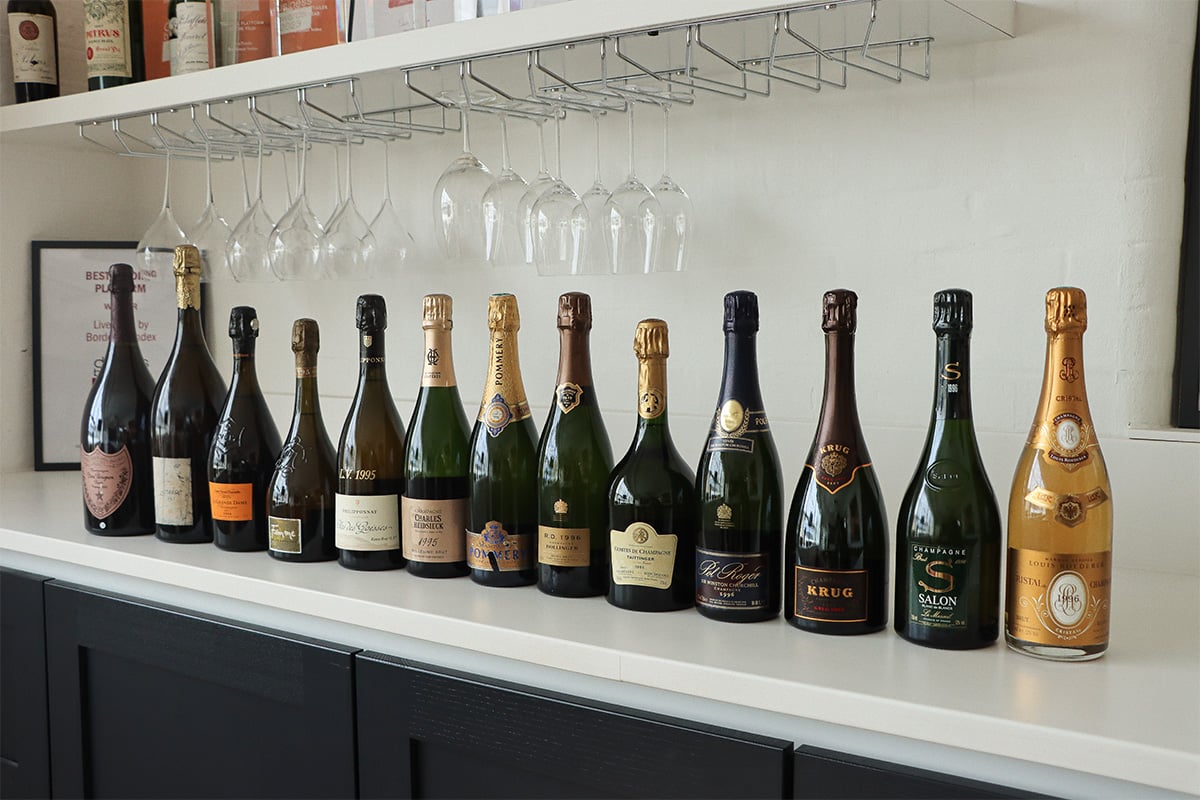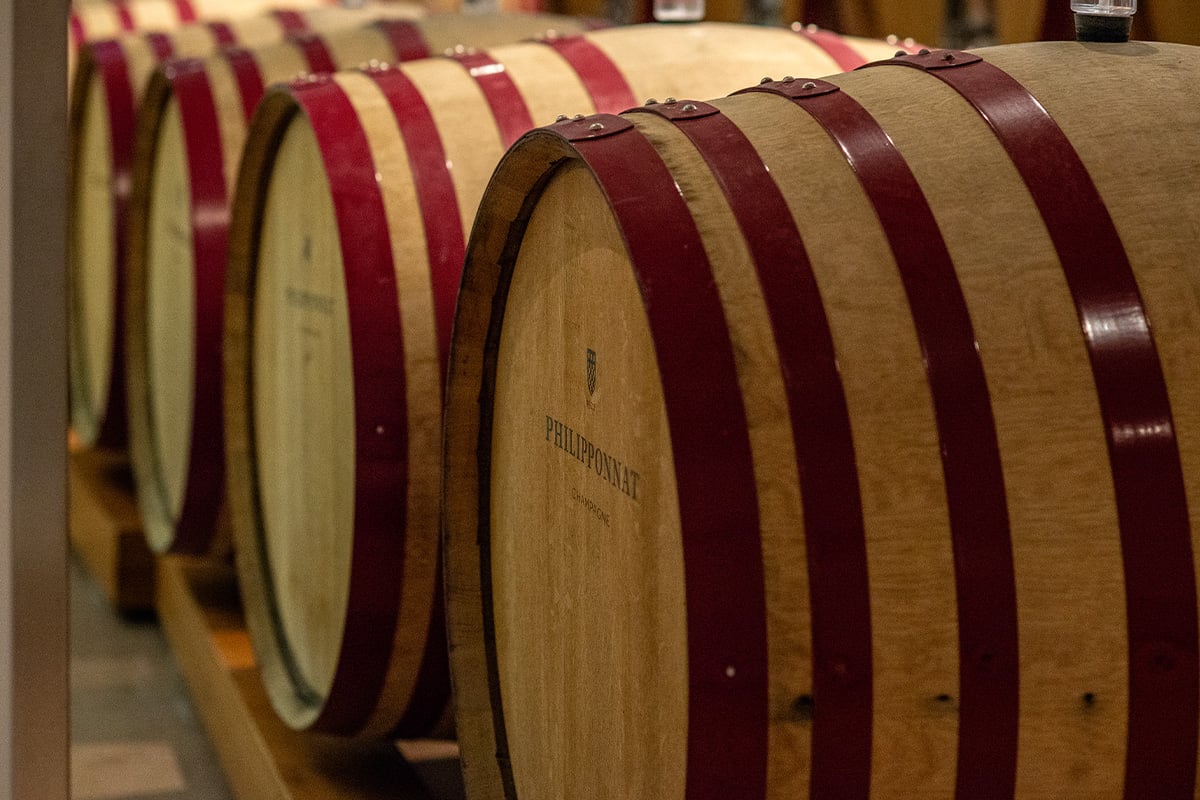The Test of Time: Revisiting 1995 and 1996 with Charles Philipponnat
Bordeaux Index
13 November 2025
At the recent Bordeaux Index 1995 vs 1996 Champagne tasting, two landmark vintages were examined side by side.
In the 1990s, Champagne produced three vintages now considered great: 1990, 1995 and 1996. While 1990 has long been celebrated, it was 1996 that initially captured critical imagination on release. The wines were powerful, dramatically acidic and full of tension; many critics declared it "the vintage of the decade". By comparison, 1995 was well-regarded but seen as more classical and generous as well as earlier drinking.
Both years were lauded on release, but 1995 was soon somewhat in the shadow of 1996 – a highly unusual year characterised by high acidity and excellent ripeness, which marked it out as a year to lay down, compared to 1995’s supposedly more immediate drinking pleasure.
- Richard Woodard, The Drinks Business
Alongside critics, clients, and press, we were also lucky enough to welcome a selection of producers to our tasting. One of whom, Charles Philipponnat, head of the historic Champagne house Philipponnat and guardian of Clos des Goisses, shared with us his perspective on these two rivalled vintages. His reflections on the two vintages are as precise as his wines. Clear, thoughtful and rooted in decades of observation, they offer a lens not just on the history of Champagne but on its future.
Three decades on from their creation, the narrative of the 1995 v. 1996 has shifted somewhat from initial attention. "Retrospectively, almost everyone agrees that a majority of the 1996s have become unbalanced," says Philipponnat. "The acidity remains, especially when the malolactic fermentation was not conducted, but the fruit has sometimes evolved faster and may have oxidised." During the Bordeaux Index tasting, this pattern sometimes emerged. While some 1996s retained structure and poise, and there were some absolutely brilliant examples, others struggled to keep pace with the vintage's intense acidity.
As Charles Philipponnat remarked, “In my opinion, 1995 is superior in that it shows perfect balance.”

That lesson feels especially relevant when looking at 2016, a vintage that in some ways shares some similarities with the 1995. Our Champagne Buyer, Katherine Fisher, describes 2016 as a “sleeper vintage” - released with less fanfare, much like 1995 in its day, but possessing that same poised equilibrium that time so often rewards. And Philipponnat himself sees in it “that magic combination of concentration and acidity that will see it go the distance."
Charles Philipponnat's 2016 Clos des Goisses is one of these quiet triumphs. Georgia Hindle (Decanter, 97 pts) calls it “super refined and graceful… delicate mousse but so lively.” Jane Anson (Inside Bordeaux, 97 pts) praises its “concentration and intensity with the lightbrush finesse of a great Clos des Goisses.” Kristaps Karklins (Wine Advocate, 96+ pts) highlights its “textural and racy” character, describing it as a harmonious expression of the great Mareuil-sur-Ay site.
If 1995 has taught us that time rewards equilibrium, then 2016 may be its spiritual successor, a Champagne whose true brilliance will unfold slowly and gracefully.
Clos des Goisses – Champagne's Truth Serum
Clos des Goisses has long been regarded as one of the purest expressions of Champagne terroir. A steep, south-facing slope in Mareuil-sur-Ay, it produces wines of remarkable intensity, minerality and longevity. Philipponnat describes it as a vineyard that cannot hide: "Clos des Goisses has always been a mirror of its vintage."
That truthfulness is what makes Clos des Goisses such a fascinating reference point for understanding vintage character. Nowhere do you see this more than in the late disgorged bottlings we tasted of the 1995 and 1996. The 1995 still fresh but with an inviting generosity and the 1996 wonderfully taut and tense, showing so much drive.

The Style Question – Power vs Poise
Much has been made of the idea that 1995 represents grace while 1996 embodies power. Philipponnat agrees that there is truth in that observation but suggests the contrast goes further. While many 1996s were technically impressive, technical precision alone does not guarantee harmony. The finest 1995s now feel complete. They are open, layered and balanced, having evolved slowly and gracefully.
The 1995 and 1996 vintages were produced before Philipponnat embarked on the major modernisation of its winery between 2000 and 2003. "Temperature control did not exist," Philipponnat recalls. "Fortunately, it wasn’t indispensable when fermenting in smaller casks and enamelled vats." Still, he acknowledges that change brought precision. "After the improvements, including newer oak casks, the Clos des Goisses style became more asserted and better managed, resulting in purer, less oxidative wines."
Yet "modernisation" at Philipponnat never meant chasing fashion. The house style today is the continuity of a philosophy: intensity with clarity, structure with purity, character with longevity.

Philipponnat is one of the strongest advocates for long ageing in Champagne. The late-disgorged "L.V." releases are not experiments – they are proof of concept. "Clos des Goisses has always had a reputation of exceptional longevity," he says. "Our L.V. programme illustrates that character and demonstrates the pertinence of the House style: intensity and purity of fruit balanced by brilliant acidity resulting in fullness and complexity with pleasant freshness, including after decades of ageing."
Climate, Character and the Future of Champagne
Champagne is warming, and every grower now contends with climate volatility. Clos des Goisses, with its steep southern exposure, is already one of Champagne's warmest sites. Philipponnat has responded not by dilution or intervention, but by viticultural adaptation.
"Not performing the malolactic fermentation, increasing the surface of the canopy, weeding mechanically and managing a grass cover in the vineyard all mitigate the effects of global warming," he explains. Future plans include increasing the proportion of Chardonnay for extra freshness, and even trialling heritage varieties like Arbanne, known for its high acidity.
Philipponnat's view of Champagne’s future is not ideological but practical. "The most important factor will remain the nature of the soil in the Premier Cru and Grand Cru areas of Champagne: soft chalk with high free calcium carbonate." Soil, not fashion, remains the defining element.
Champagne today sits at the crossroads of culture: it is simultaneously a serious collector's wine and a symbol of celebration. How does Philipponnat view that duality? With characteristic balance. "Champagne is obviously both," he says. "And collecting is a good idea, provided one does not forget to draw and drink from one’s collection."

Philipponnat is not chasing reinvention. "There will be no surprise with our style," he says, dismissing any notion of sudden change. "We do not envisage changing our vine-growing and winemaking principles. If any, it will stem from the individual personality of each vintage."
He does, however, speak of vintages with quiet anticipation. "Some beautiful, balanced vintages are on their way," he notes, mentioning 2016, 2019 and 2022 as years of particular promise. Asked how he hopes this era will be remembered, his answer is simple: "Hopefully, a Golden Age for Champagne at large, and Clos des Goisses in particular."
